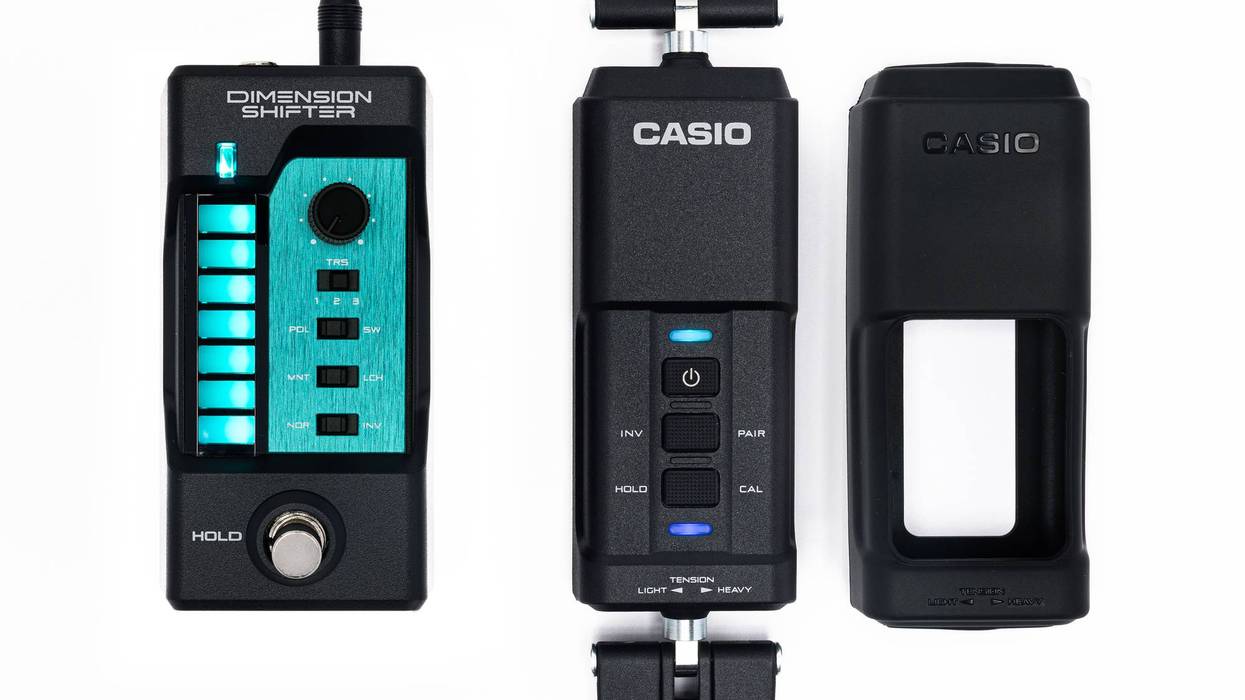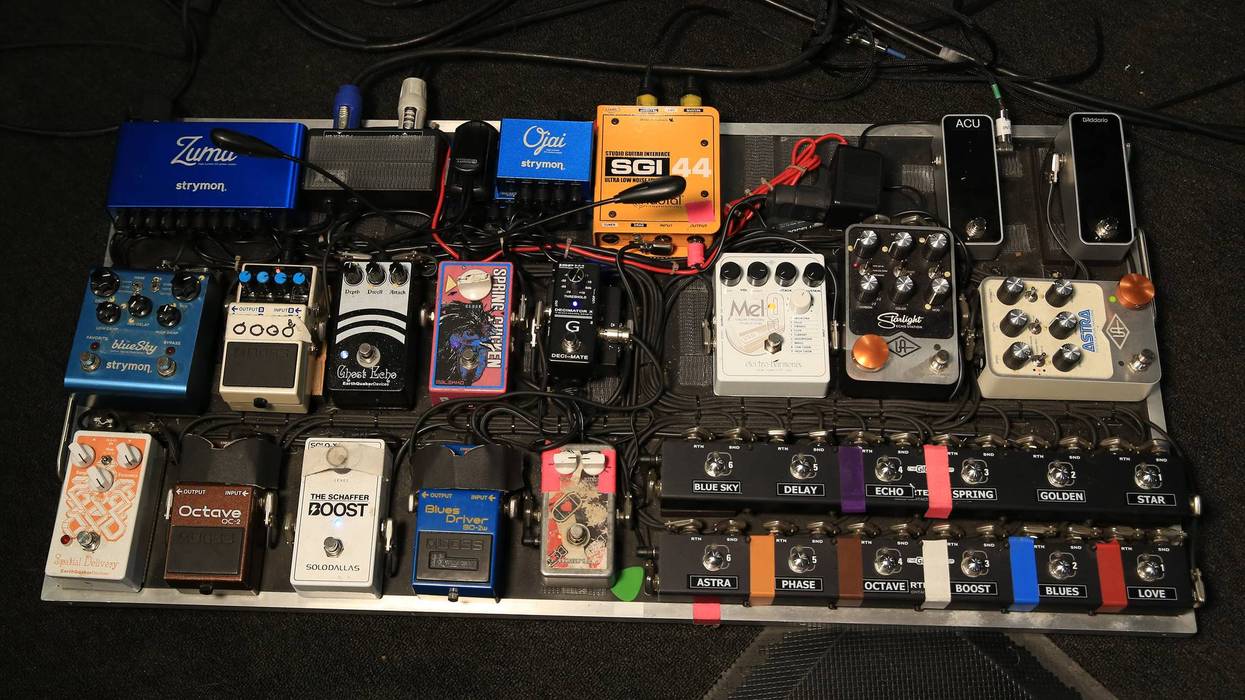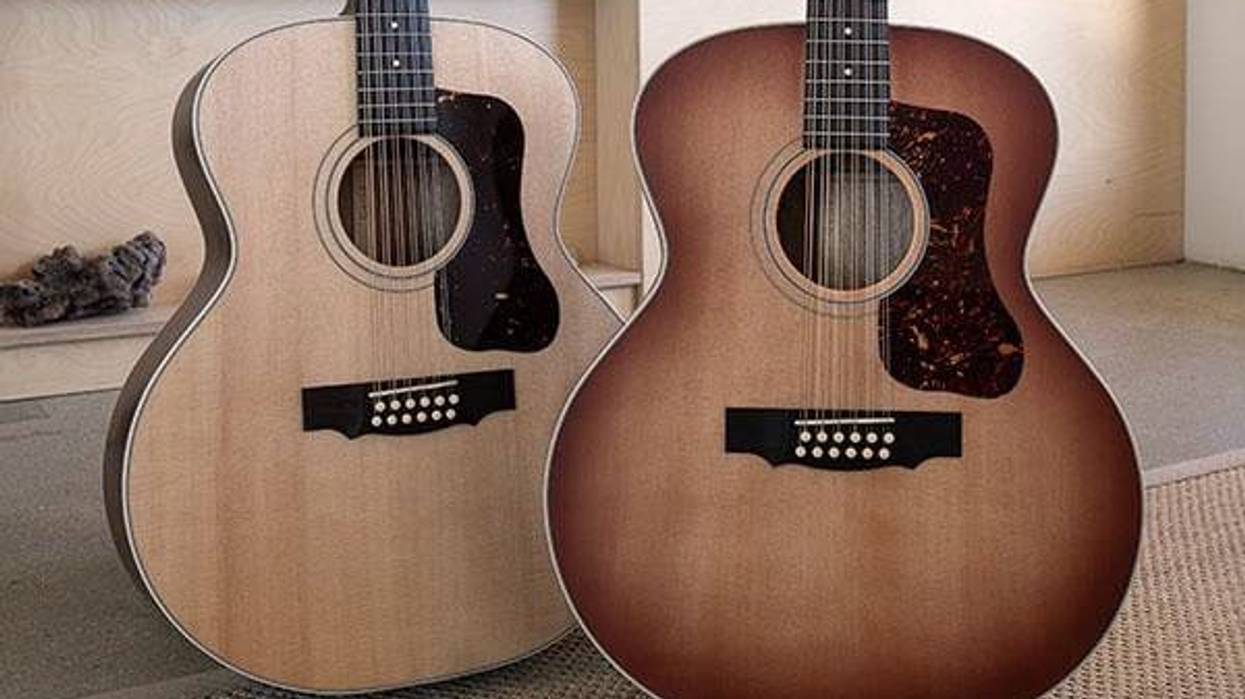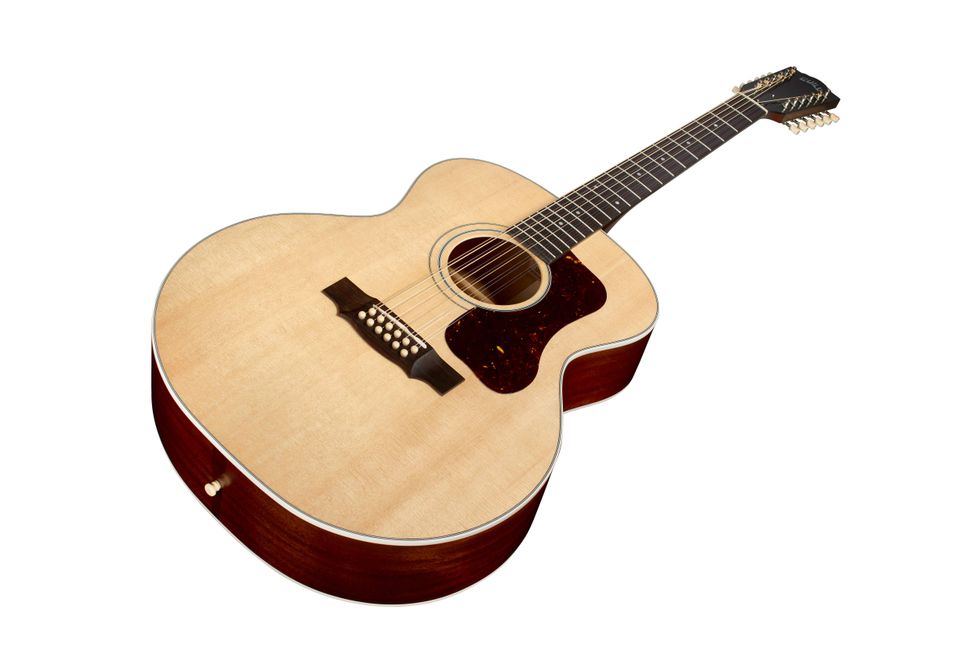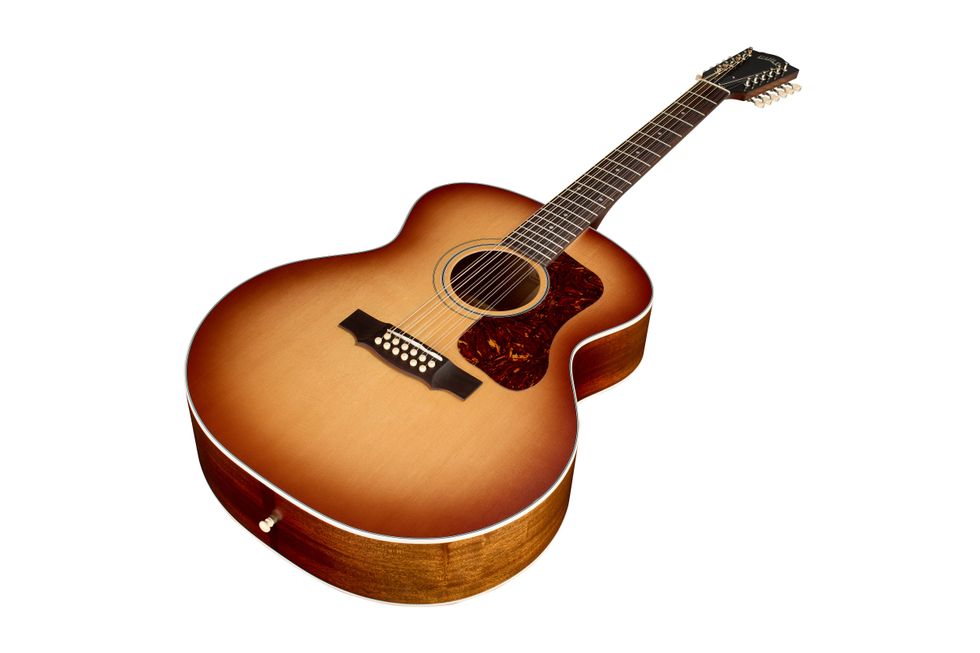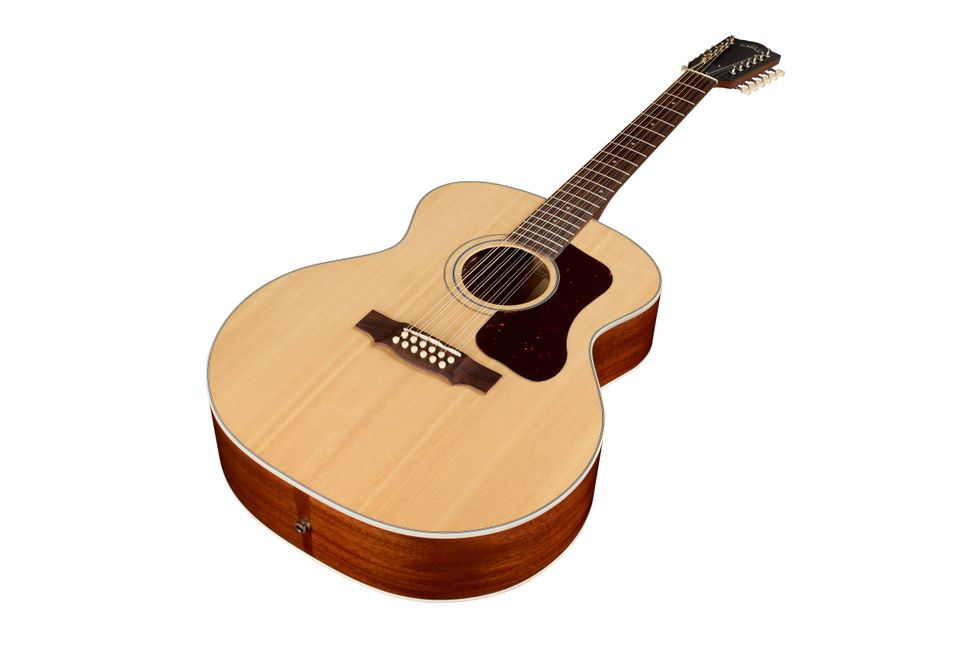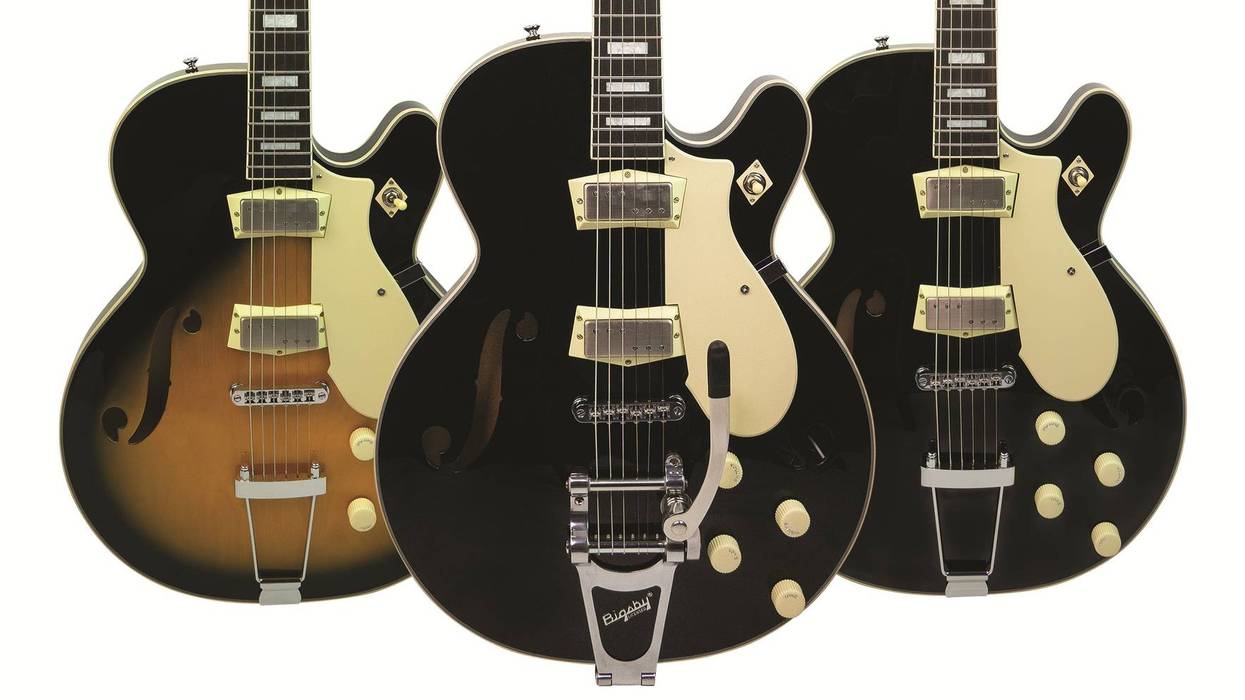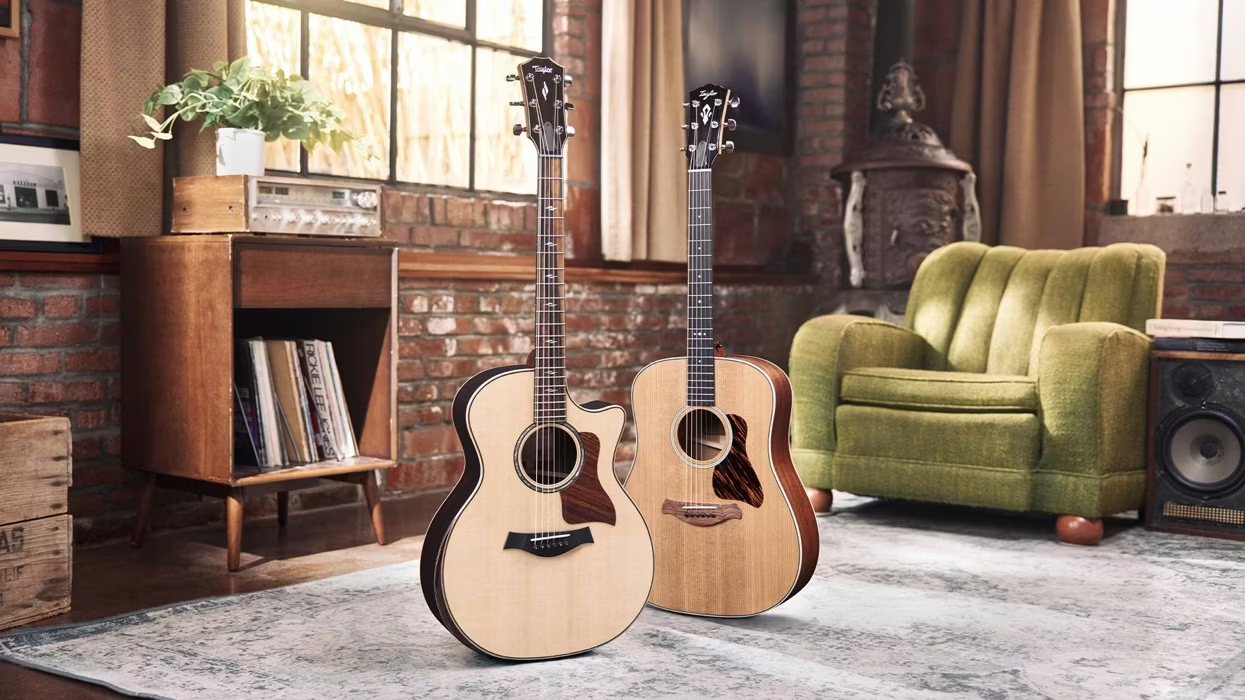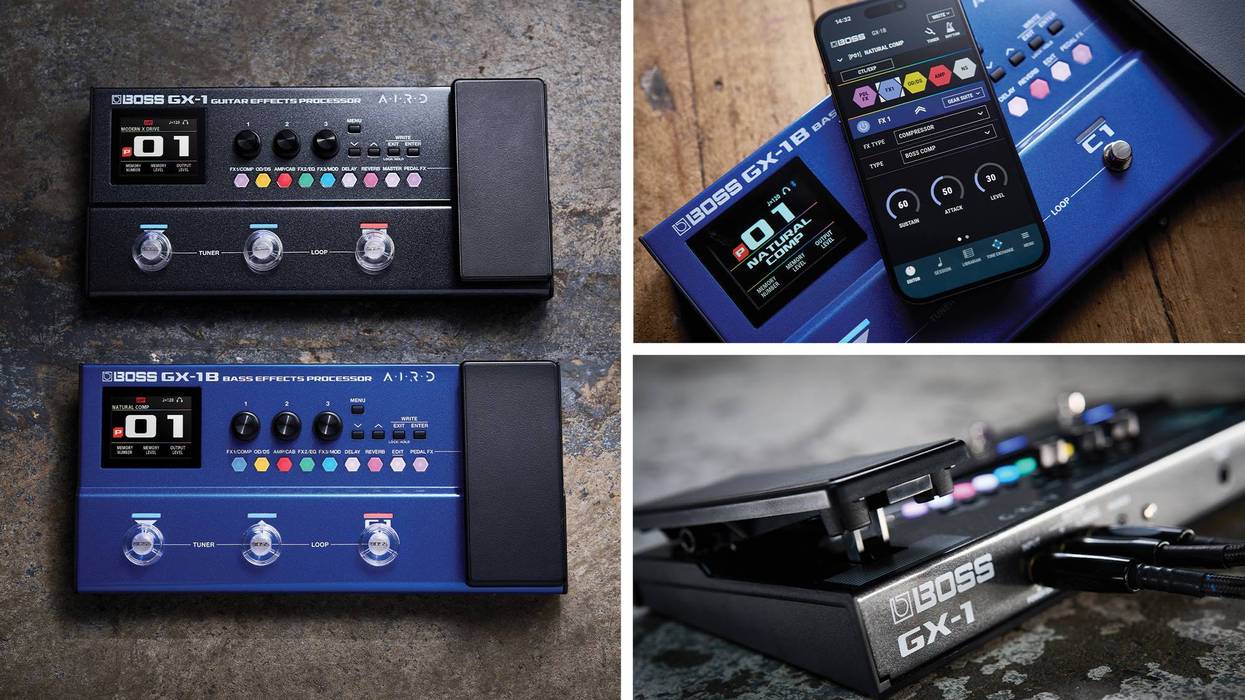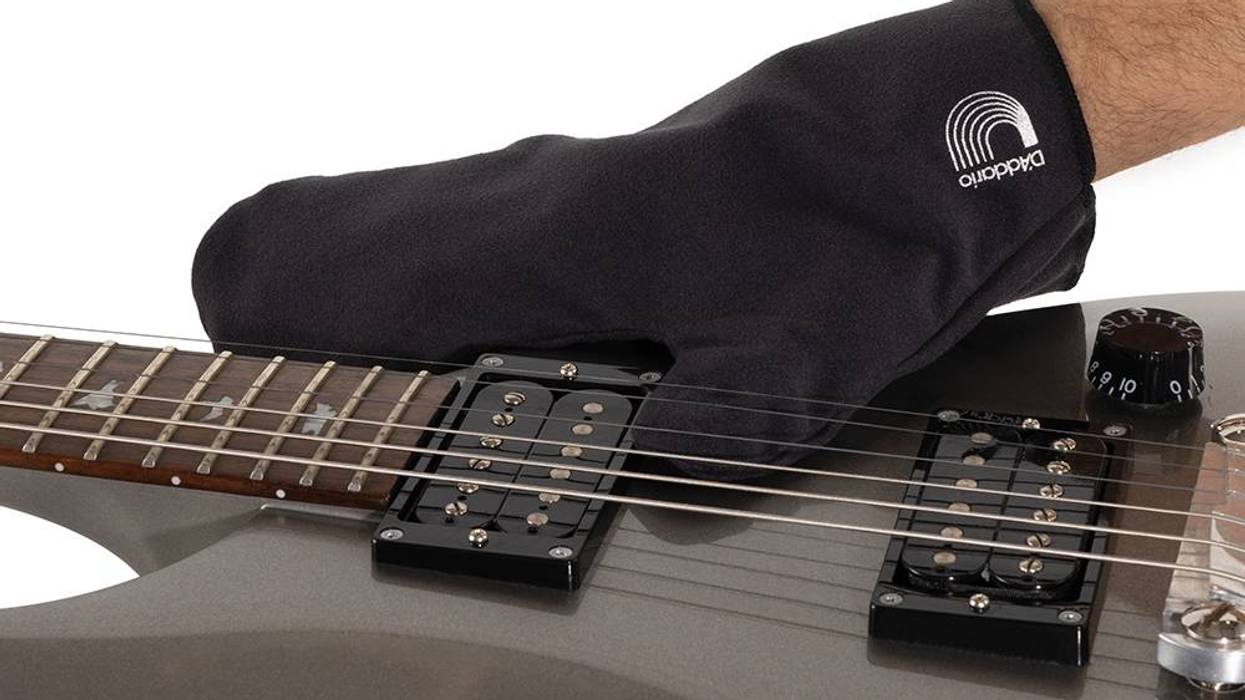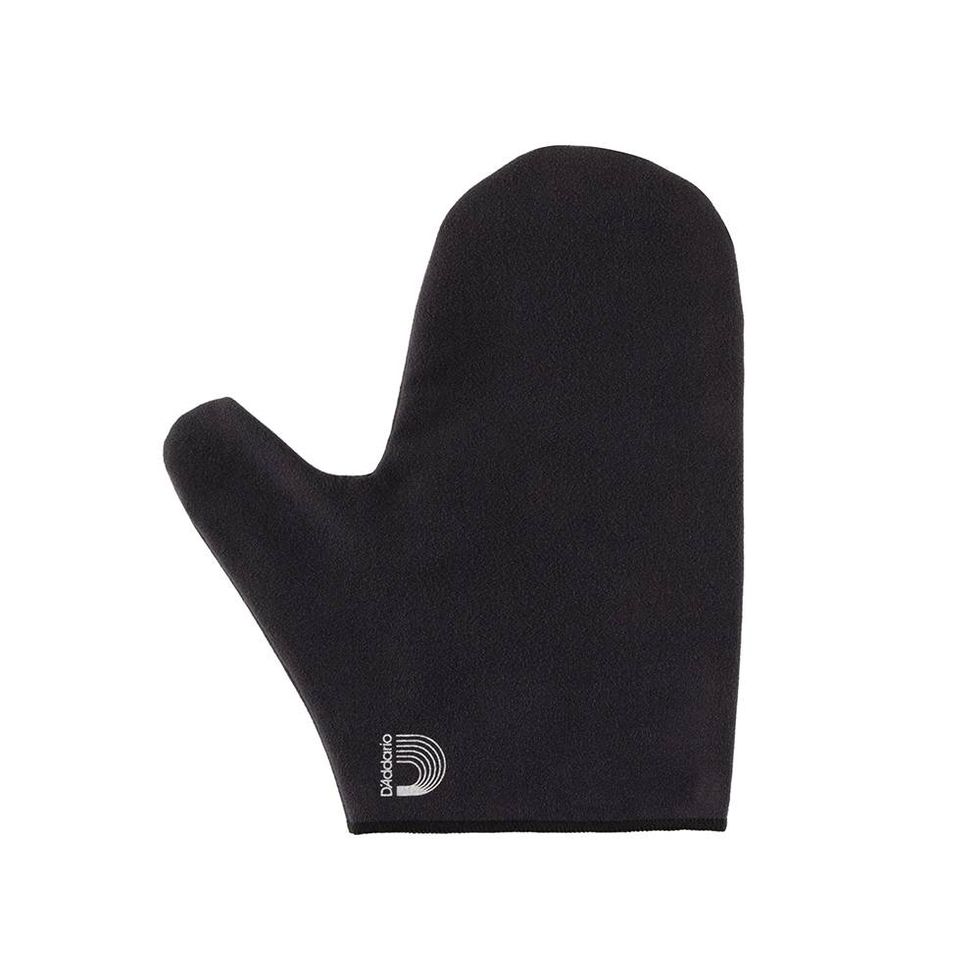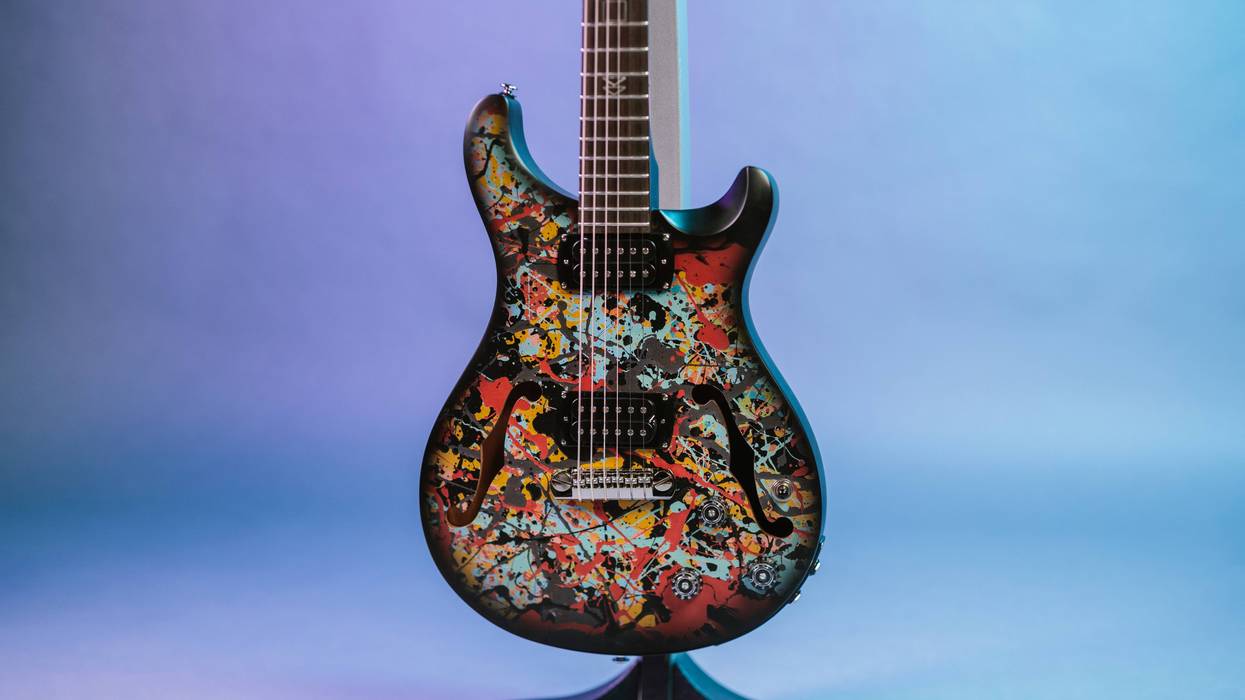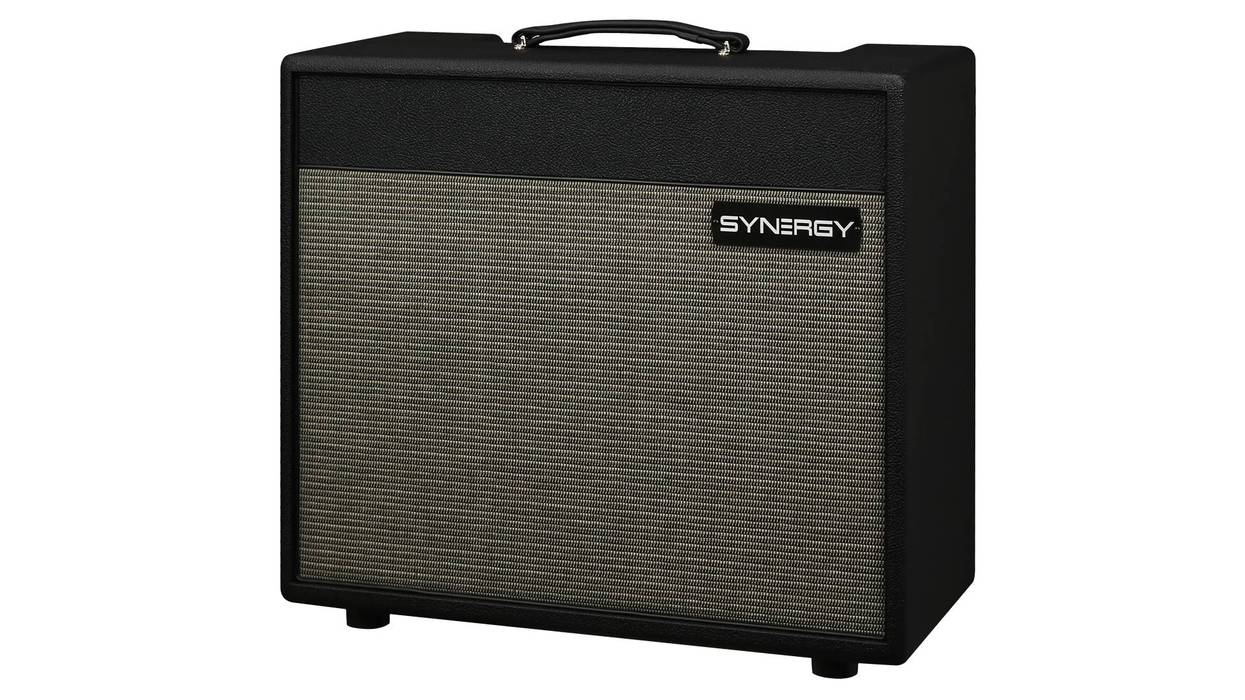A good boost pedal can be one of the most indispensible tools in a guitarist’s arsenal. Some amps, after all, have only so much to give. And even if your amp has channel switching, second channels can have completely different gain structure and voicing. Sometimes you just want a little more of the sound that you’ve worked so hard to perfect, with a little attitude on top. That’s where boost pedals come in.
Some boosters are designed with the intent of adding, say, a sharper edge to the high end, or darkening the tone to create a blusier, softer tonality. Most, however, are designed to make you louder without sacrificing any of your tone’s original voice in the process. We decided to test out four of the newest boutique booster pedals on the market to find out what they can add to the sonic brew.
To give the pedals a proper shakedown, I used a combination of a 2011 Fender American Telecaster—a real workhorse with a clear and biting voice that works well with boosters, and the clean, detailed tone of a Mesa/Boogie Royal Atlantic, which provided a great canvas to hear just how these pedals work.
Lotus Pedal Designs Desire Boost Pedal
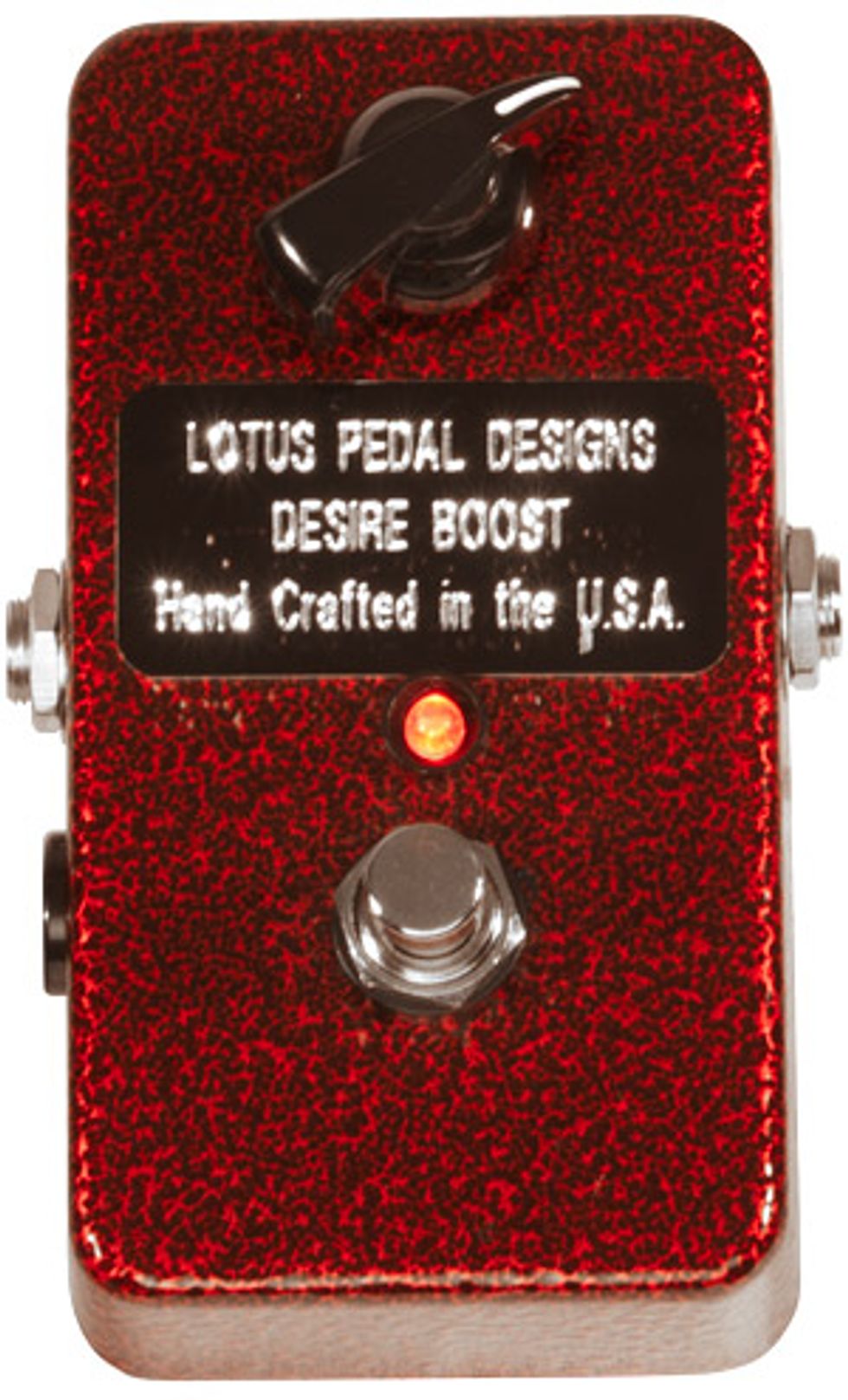
The Desire’s circuit employs a JFET gain stage, which is there to add a little grit and muscle to the boosted tone. While most boost pedals strive to provide the same original tone with simply more volume and clarity, the Desire Boost dirties things up a bit. Lotus also designed the Desire Boost to have an extremely high input impedance, which makes it handy for taming noise from noisy cables, and preserving a guitar's signal at the front of a line of buffered effects.
The Desire Boost added a lot of bounce in the low end, a quality that got more pronounced the harder that I hit the strings with my fingertips. Running through some standard country progressions, you can hear the natural feel and warmth of the Lotus. It infused the Mesa’s beautiful cleans with a bubbly low end and crisp highs, that actually found me dropping the amp’s treble knob a bit to get it under control. As natural and rubbery as the lows become, the highs retain a very hi-fi quality that makes arpeggios dazzling with a touch of extra sustain. With the capacity to boost, enhance clarity and harmonic content in clean environments and add a little dirt, the Desire Boost is a well-rounded slice of simplicity.
Pros: Outstanding clarity boost. Fantastic low end. | Value: |
Pigtronix Class A Boost
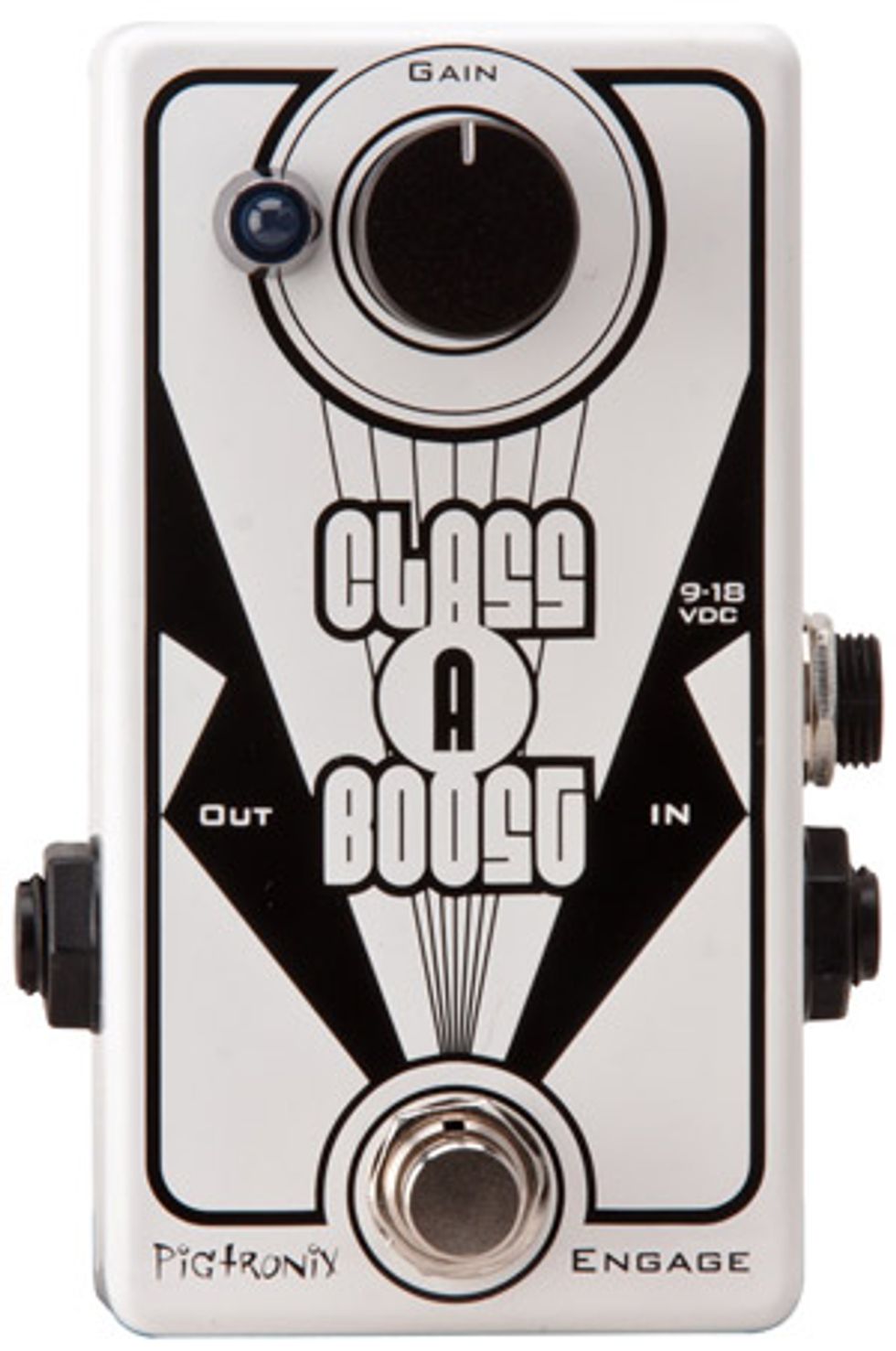
Pigtronix designed the Class A Boost around a single-ended Class-A configuration, utilizing discreet JFET transistors. The circuit was designed in conjunction with famed pedal designer Howard Davis, who designed legendary Electro-Harmonix pedals including the Electric Mistress and the Deluxe Memory Man. Pigtronix’ choice of a Class-A circuit revolves around trying to coax a warmer edge from the boosted tone, which can be set to deliver a hefty 20dB of extra push. It's also voiced to act well with an overdriven amp or overdrive pedal, and its noise floor is so low that it can be patched into the signal chain wherever desired. Battery users be warned however, as the Class A Boost doesn't accept batteries—it can only be powered from either a 9V or 18V wall wart—but it comes packed with an 18V power supply for maximum headroom.
Pigtronix's little tuxedoed wonder is all about sparkle and refinement in the high end. During bluesy runs the Telecaster’s slicing qualities became magnified and focused with a very slight cut in the low end. Bumping the gain keeps the Telecaster stayed clean, clear, and natural-sounding without any added distortion. This is thanks in no small part to the 18V power supply, which kicks the headroom to impressive heights. Switching to a 9V power supply helps soften and cut the high end of the boosted tone. But it also gives the pedal a lower ceiling that results in a lovely, slightly fuzzy drive at higher settings.
Pros: Great detail in the high end. Excellent headroom with 18V wall wart. | Value: |
Caroline Guitar Company Icarus Boost
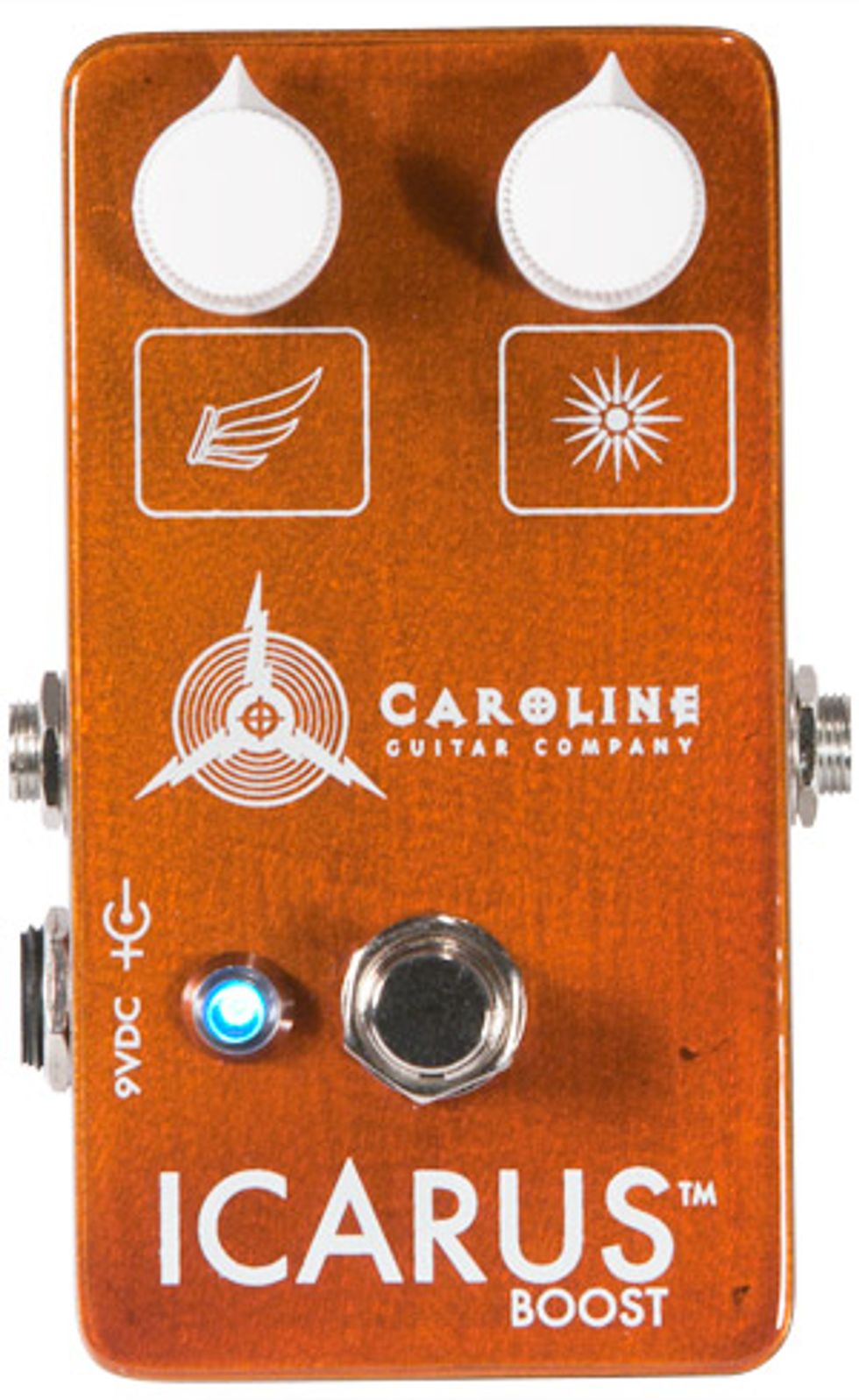
The Icarus was conceived with the notion that a booster shouldn't sound boring, and as such is intentionally not transparent. The pedal was a match made in heaven for the Tele and the Boogie. Fingerpicked chord structures had a more stalwart nature, with a stronger kick in the midrange and low end. The low, clean tones of the Royal Atlantic are pretty tight, but the Icarus gives them a crisper, less rounded nature. It’s a pretty cool tone that’s still really detailed—especially for Jerry Reed and Merle Travis fingerpicking styles.
The Icarus' built-in treble control doesn’t just add top end. It also counteracts the brightening effect that results from the lower output impedance of booster circuits. This makes the Icarus great for pulling back on the abrasive edge that sometimes comes with a boosted single-coil pickup too. Lower settings can have a drastic effect on the tone, blanketing it in darker, thicker voicings. The treble control came in handy when I needed to subdue the high end for jazzier progressions.
The Icarus is a great boost that invigorates your tone without sacrificing its best attributes. It can be a touch rigid-sounding, especially with higher settings of the boost control. But dropping the treble control will take the edge off the extremely snappy top end, thicken the tone, and let your guitar breathe a bit. If you’re in the market for a boost that takes no prisoners, but can mellow out too, this one is worth a try.
Pros: Ability to darken and brighten the boosted tone. Solid build and crisp tonality. | Value: |
Whirlwind The Bomb
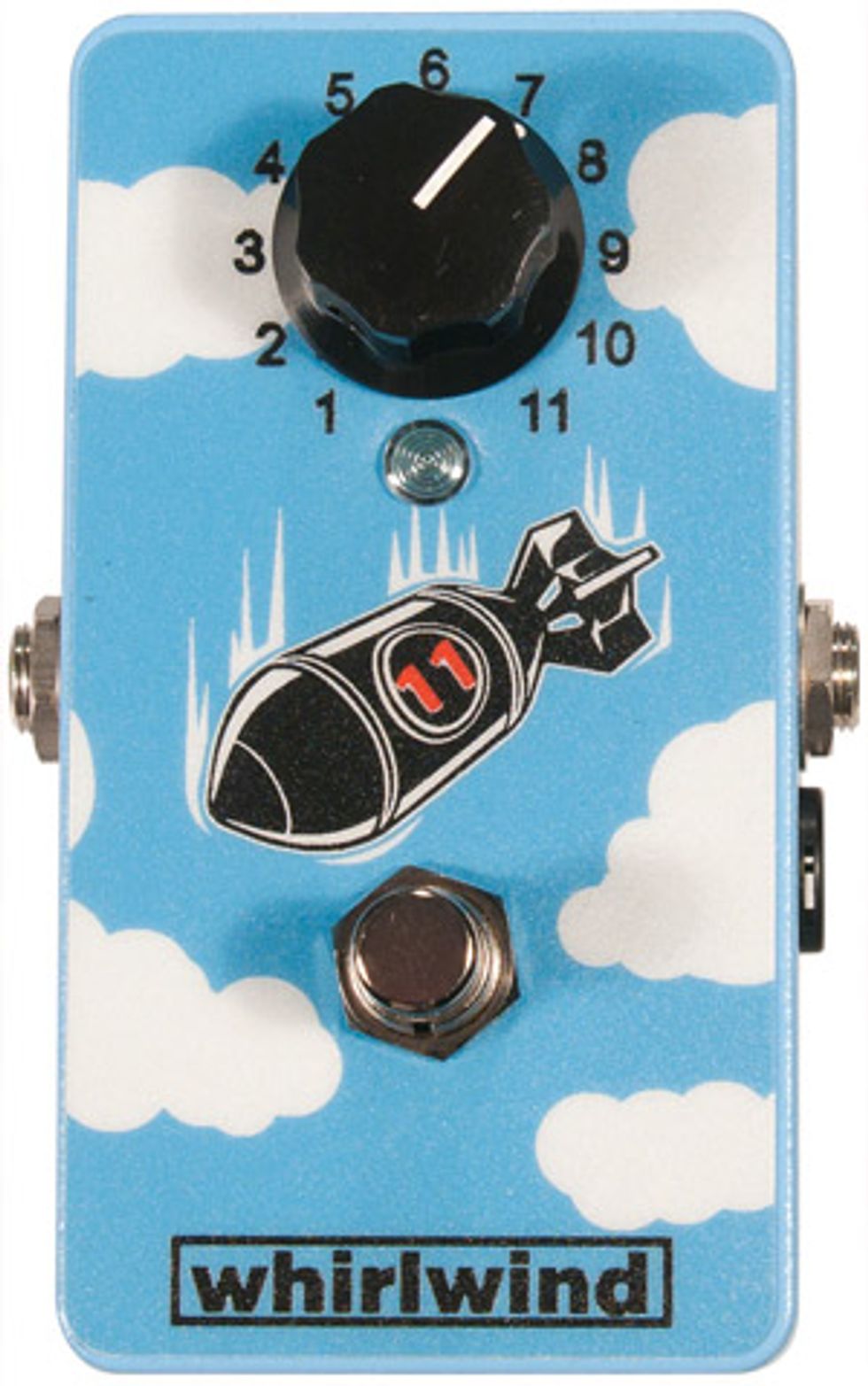
The face of The Bomb has only one giant knob—labeled 1 to 11—for setting the amount of volume boost, and that's it as far as features go. The pedal is rated for a maximum output of 26dB, with unity gain at 1 and the full amount at 11.
The Bomb is incredibly honest and accurate—perfectly replicating nearly every aspect of the Tele’s biting tone. It will pick up the sharper dynamics of flatpicking but the softer overtones from fingerpicking come through just as beautifully and precisely.
The Bomb has pure volume boost in spades. I rarely moved the pedal’s single control past the 11 o’clock range. But even at high volume it’s hard not to be struck by how well The Bomb preserved the Tele’s original tone, no matter how hard I hit the strings. To some players looking for just a little more dirt from their boost, this might be the pedal’s only drawback. Nor does it bring anything to the table in terms of heightened clarity or added bite, so if you’re looking for a booster that adds a little character with a volume jump, you might want to check out one of the other models on this list. But if you’re in the market for a booster that doesn’t color your tone, this bomb might be right on target.
Pros: Little noticeable tone coloration. Preserves original guitar signal. | Value: |



